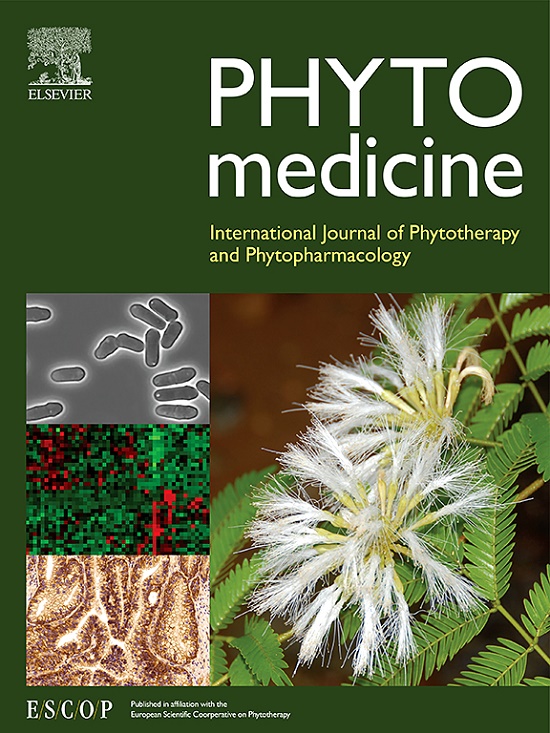Naoqing formula alleviates cerebral ischemia/reperfusion injury induced inflammatory injury by regulating Csf3 mediated JAK/STAT pathway and macrophage polarization
IF 6.7
1区 医学
Q1 CHEMISTRY, MEDICINAL
引用次数: 0
Abstract
Background
Upon cerebral ischemia/reperfusion injury (CIRI), the brain tissue experiences excessive inflammatory responses, which fuel the activation of immune cells, thereby intensifying cellular damage and inflammatory reactions. Naoqing formula (NQ), a traditional Chinese medicinal compound formulated with musk as the primary component, has been extensively utilized in China for the clinical treatment of ischaemic stroke (IS).
Purpose
The precise pharmacological mechanism underlying NQ's efficacy in managing IS remains elusive. In this study, we investigate the protective effect and molecular mechanism of NQ against CIRI.
Methods
C57BL/6 mice were utilized to investigate the protective effects of NQ (130, 260 and 520mg/kg) against middle cerebral artery occlusion (MCAO) induced CIRI and the underlying mechanism. Employing molecular biology techniques, transcriptomics, proteomics, and network pharmacological analyses, the study assessed the role of NQ in the inflammatory response of neuronal cells by establishing a model for neuronal cell and microglia inflammatory injury induced by oxygen-glucose deprivation/reperfusion (OGD/R) and lipopolysaccharide (LPS) stimulation.
Results
NQ demonstrated significant efficacy in mitigating neuronal damage and cerebral infarction induced by CIRI, achieved through the enhancement of cortical blood flow. Transcriptomic and network pharmacological analyses revealed that NQ mitigated the inflammatory damage caused by CIRI by modulating the Csf3-mediated JAK/STAT pathway. Proteomic analysis further corroborated this finding, indicating that NQ reduced the impact of CIRI by regulating macrophage polarization. Notably, in CIRI mice treated with NQ, there was a notable downregulation of Csf3, JAK2, STAT3, and STAT6, along with a co-localization of Csf3 and CD206. These observations suggested that NQ inhibited the activation of the JAK/STAT pathway and exerted its anti-inflammatory effects by orchestrating the transition of macrophages from the M1 phenotype to the M2 phenotype, triggered by Csf3. Consistent with the in vivo findings, NQ also inhibited the activation of the JAK/STAT pathway in neuronal cells and microglial polarization in vitro, thereby protecting against OGD/R- and LPS-induced inflammatory injury.
Conclusion
This study confirmed that NQ prevented CIRI induced inflammatory injury by inhibiting Csf3-mediated activation of the JAK/STAT pathway and modulating Csf3-mediated macrophage polarization. This study provided a new perspective on the use of NQ in the treatment of IS.

求助全文
约1分钟内获得全文
求助全文
来源期刊

Phytomedicine
医学-药学
CiteScore
10.30
自引率
5.10%
发文量
670
审稿时长
91 days
期刊介绍:
Phytomedicine is a therapy-oriented journal that publishes innovative studies on the efficacy, safety, quality, and mechanisms of action of specified plant extracts, phytopharmaceuticals, and their isolated constituents. This includes clinical, pharmacological, pharmacokinetic, and toxicological studies of herbal medicinal products, preparations, and purified compounds with defined and consistent quality, ensuring reproducible pharmacological activity. Founded in 1994, Phytomedicine aims to focus and stimulate research in this field and establish internationally accepted scientific standards for pharmacological studies, proof of clinical efficacy, and safety of phytomedicines.
 求助内容:
求助内容: 应助结果提醒方式:
应助结果提醒方式:


